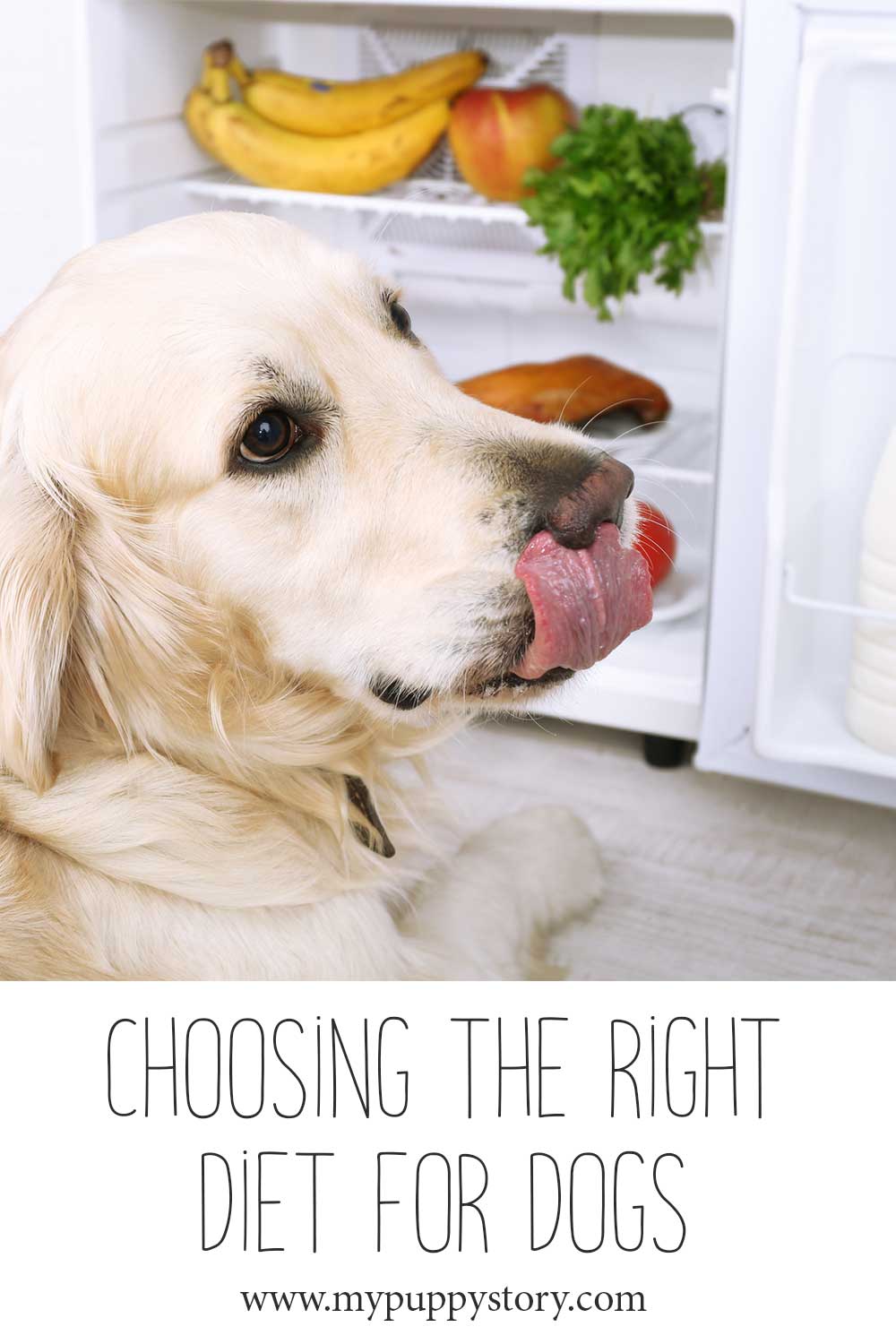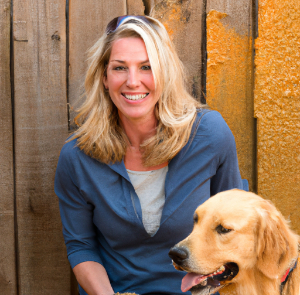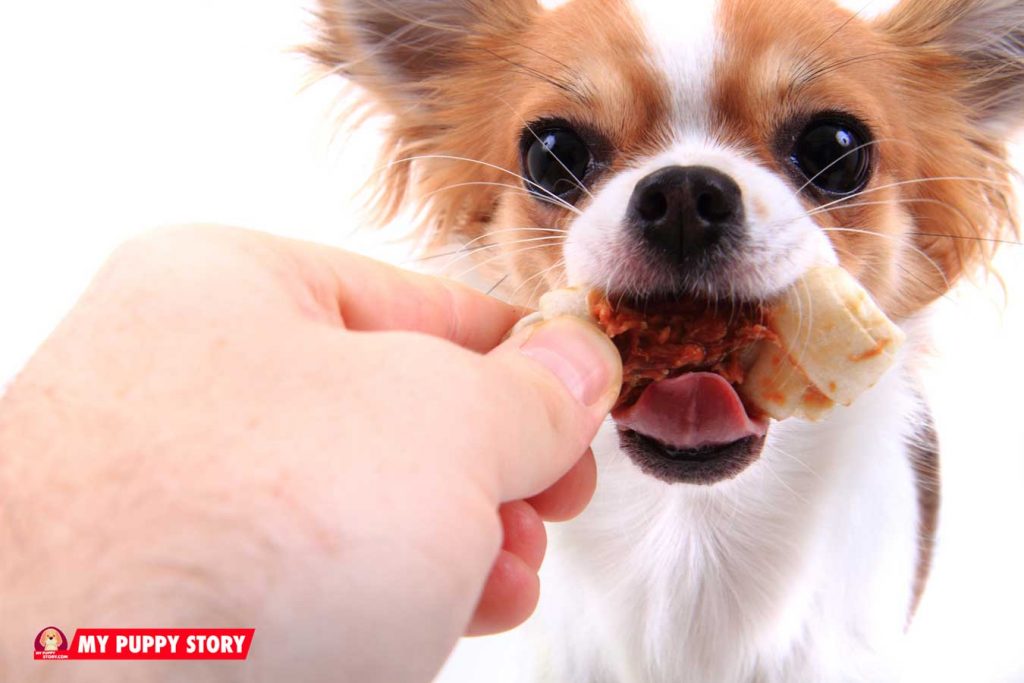
When we take a dog into our lives, we’re actually making a contract. In return for companionship and affection, we’re promising the same – plus shelter and food.
It’s easy to know whether the shelter you provide – whether it’s outdoors, in the house or at the foot of the bed – is sufficient to keep your dog happy and safe. Food, though, can get a lot more complicated.
Is keeping a bowl filled with cheap kibble more than enough, or do you have to find a gourmet brand? Is dog food or “human food” a better option? Does it make sense to pay higher prices for premium, super premium, organic or grain-free brands? And what about those people who spend hours making their own pet food – are they crazy or are they doing the right thing to keep their pet healthy?
You’ve probably already guessed this, but there’s no “right” answer to the important problem of choosing the right diet for dogs.
Think of it this way. If you could afford it (and weren’t a vegetarian) you would probably want to serve organic meat and produce to your family, because those are the healthiest options. But you certainly wouldn’t give your infant a grass-fed bison steak with a side salad made from organic greens and apples, along with a glass of organic wine. On the other hand, you wouldn’t want be thrilled to sit down to a scrumptious dinner of baby food or infant formula.
Humans – and their dietary needs – are all different. The same holds true for dogs, particularly because canine dietary requirements depend not only on their age, but also on their size, food sensitivities and allergies.
What follows is a comprehensive look at how you can choose the right diet for your dog, along with important information about dog food that most people have never considered.
As you now know, if you didn’t know already, the right diet really depends on the dog. But there are some basic facts about canine nutritional needs which should shape any decision you make about the ideal diet for your pet.
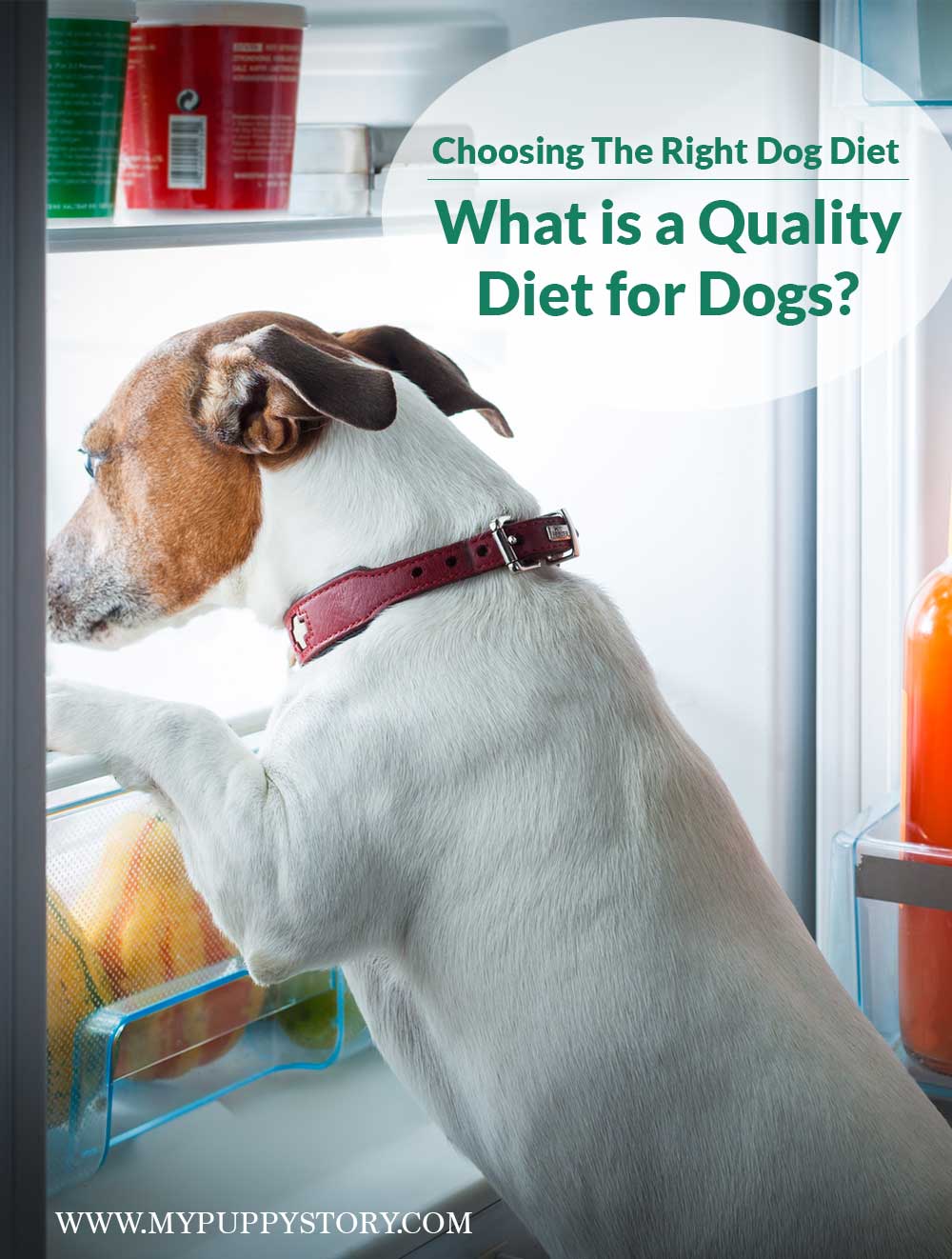
Dogs Are Not Strict Carnivores
Cats are what are called “obligate” carnivores; they need to eat meat in order to survive and thrive. Dogs, on the other hand, are “scavenging” carnivores. They prefer meat and need it to thrive, but they can survive just on vegetable matter if necessary.
That doesn’t mean a vegetarian diet is good for your dog. But unlike a cat, your dog can benefit from small amounts of vegetables and quality fillers like rice or oats like which provide carbs, fiber and minerals and are usually included in dog food. Some canines enjoy veggies like broccoli or carrots and they’re fine as occasional treats; mixing extra vegetables into an overweight dog’s food is often recommended as a way to provide a filling meal with fewer calories. Just be sure to avoid raw potatoes, onions and avocado which can cause serious illnesses.
Dogs Need Plenty of Meat
The rule of thumb often cited is that protein should make up 20-30% of a dog’s diet. That’s not a terrible guideline, but in reality, it’s just a “minimum” number that food manufacturers use. Most stick to the minimum because meat is an expensive ingredient. There’s no need to be concerned with “too much protein” in your dog’s diet as long as he’s healthy; he’ll just excrete the rest through his urine with no damage to his kidneys. The bigger problem is “too little protein,” because dogs need 22 amino acids to thrive but can only make 12 of them internally. The rest have to be supplied by the protein they eat.
If you’re concerned about how much meat your dog eats, think about dogs in the wild. Do you think they stop eating the animals they catch, in order to graze in a wheat field to make sure they’re getting a balanced diet? When it comes to protein the big issue isn’t quantity, it’s quality. We’ll deal with that subject shortly.
Dogs Need Water
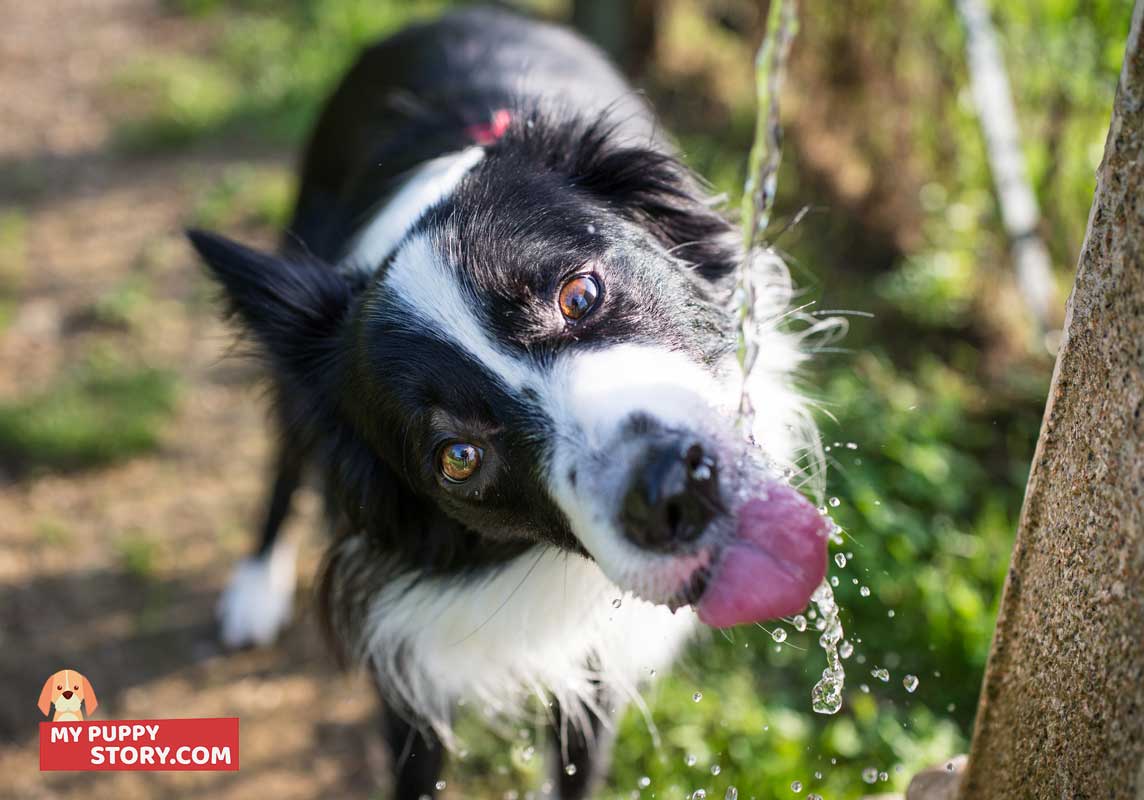 Even first-time dog owners know they have to put out a bowl of water for their new pet. In general, dogs need at least one ounce of water per day for each pound of body weight. For most, that’s not a problem – you don’t normally have to worry about your dog’s water consumption. However, if you have a pet that shows signs of dehydration (usually due to illness), or doesn’t seem overly interested in his water bowl (or less-healthy options like toilets or puddles) canned food is around 75% water and should definitely be considered.
Even first-time dog owners know they have to put out a bowl of water for their new pet. In general, dogs need at least one ounce of water per day for each pound of body weight. For most, that’s not a problem – you don’t normally have to worry about your dog’s water consumption. However, if you have a pet that shows signs of dehydration (usually due to illness), or doesn’t seem overly interested in his water bowl (or less-healthy options like toilets or puddles) canned food is around 75% water and should definitely be considered.
Dogs’ Diets Should Depend On Age and Size
Once a puppy is old enough to “look like a dog,” many people simply buy them “dog food.” However, that ignores the fact that dogs have three life stages with different nutritional requirements. From birth to 12-18 months (depending on breed) more protein, calories, fat and phosphorus are required for growth. In adulthood (until age 6-8) a maintenance diet is more appropriate because it provides more carbohydrates for energy, and it’s lower in calories, fat and protein to prevent the common problem of obesity in adult dogs. Older dogs usually have more difficulty metabolizing and digesting food so calories are lowered, protein is more digestible and fiber is increased.
There are many who don’t want to bother with those distinctions, or who have several dogs in different life stages who share food. There’s an easy answer. Some foods are approved “for all life stages” (we’ll look at the approval process shortly) and can be safely fed to puppies, adults and older dogs unless they have specific health issues or circumstances. There are separate foods for lactating or pregnant dogs, as well as those with joint, urinary, dental or other problems. In the latter cases, it’s best to consult your vet.
There are lots of dog foods on the market supposedly developed for specific breeds, but that’s primarily a marketing gimmick. There’s no evidence that breed-specific foods benefit dogs as long as they’re being fed an age-and-size appropriate diet. For example, small breeds have smaller stomachs and higher metabolisms, so they should be fed foods higher in calories than large breeds, particularly when young. Large breeds, on the other hand, are more likely to develop arthritis as they age, so food containing antioxidants like chondroitin would be appropriate.
AAFCO
The Association of American Feed Control Officials is the organization that sets maximum/minimum nutritional standards for pet food. AAFCO doesn’t test or approve specific foods, it’s not a government agency, and many large pet food companies are on the board of advisors. But it’s the best we’ve got, and most major manufacturers make sure their food meets AAFCO standards. It’s good for their business as well as for dogs’ health.
The best way to know what you’re feeding your dog is to read the label carefully and have a deep knowledge of canine nutritional needs. That’s a huge assignment, though. The next best choice is to look for an AAFCO statement of “nutritional adequacy or purpose.” If a food’s label says “complete and balanced” for a specific life stage or “for all life stages” it may not be the best food available, but it will be a safe choice. AAFCO also has standards for “natural” food, meaning it can’t be highly processed or include artificial or synthetic ingredients.

Sometimes, real meat is in dog food. If you read the label, though, you’ll often see ingredients like by-products, meal and by-product meal. What is all that stuff?
If you don’t have a strong stomach, you may want to skip this section. By-products and meals are made from the parts of an animal that aren’t really meat. They’re not fit for humans to eat, but they’re approved for pets.
Before you run to the cabinet and throw out all of the dog food in your house, there are a few things you should know.
First, the fact that you wouldn’t eat this stuff doesn’t mean your dog wouldn’t eat it. Most of these animal parts are routinely eaten by dogs in the wild; they don’t read labels. Second, those are what manufacturers are allowed to use in making by-products and meal. Not all manufacturers include all of those livestock parts.
Importantly, there’s a huge difference between “beef by-products” or “chicken meal,” and “meat by-products” and “meat meal.” When the ingredient only specifies “meat” there’s no telling what animal it came from – or where it came from. It could be beef, but it could also be pigs’ heads, horsemeat or even the remains of euthanized dogs or cats from an animal shelter. The generic word “meat” on a dog food label is bad news.
But most importantly, by-products, and particularly meal, aren’t necessarily bad ingredients. Manufacturers use them because they’re a cheaper and more concentrated form of protein, and meal can actually make a food better by increasing its protein content. If your food comes from a high-quality producer you shouldn’t be scared off; by-products and meal aren’t necessarily evil, but some manufacturers can be.
What else is in dog food? You’ll find vegetables and grains (often processed into meal to be digested easily) to provide protein and carbohydrates. Vitamins and minerals are usually added in some form to create a balanced diet and for their antioxidant properties, and small amounts of fats are usually added as well. Lastly, many manufacturers add preservatives and colorings, as well as chemical agents to hold wet food together.
None of those ingredients should be harmful in and of themselves, but many owners prefer to avoid foods with any artificial additives. As we’ve said before and will say again, be sure to read the label.
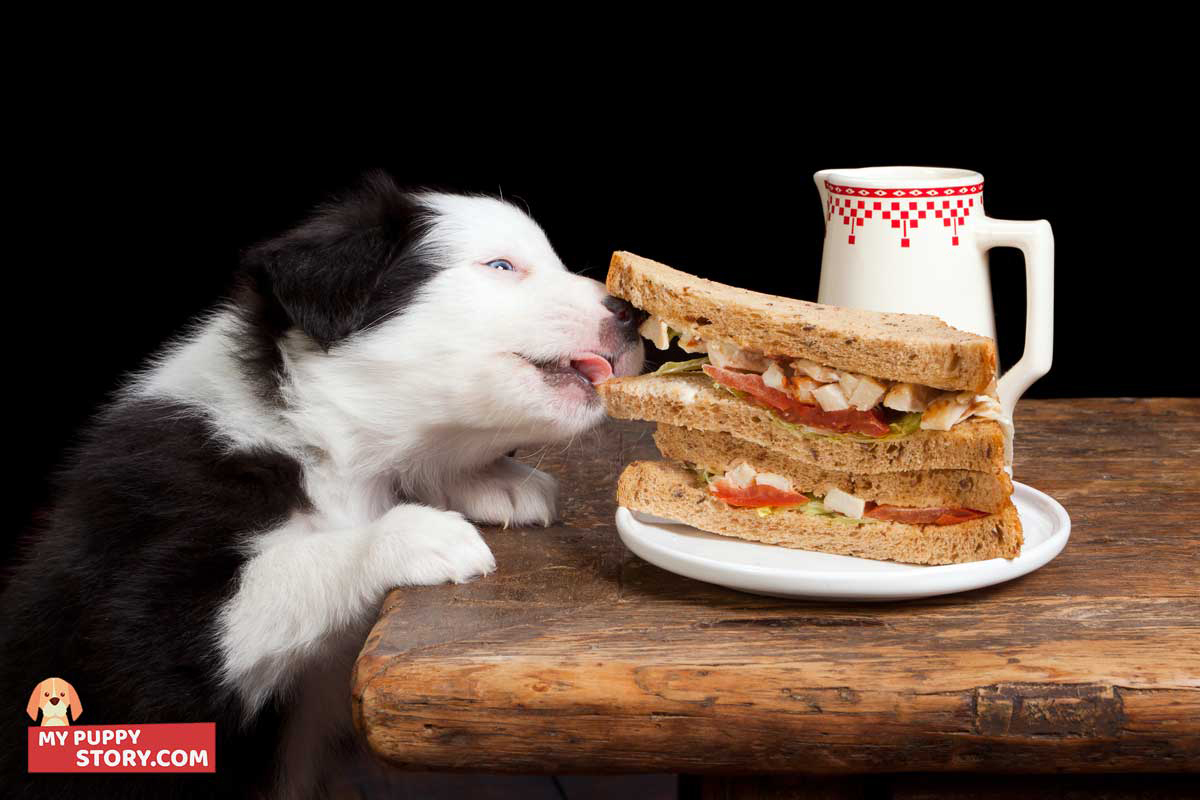
Have we mentioned reading the label? Sorry to be redundant, but there’s no other way to identify high-quality dog food. You can’t just rely on advertising claims or brand names.
Before plunging into the fine print on a label, here’s what you need to know. Ingredients on any pet food label are listed in order of weight, so the ones at the top of the list are the most important. Also, if a dog food label advertises a single ingredient like “Acme Chicken Dog Food,” it has to contain at least 95% chicken. If it advertises that it’s a “beef entrée,” “beef dinner” or “beef platter” it must contain at least 25% beef.
The first listed ingredient on the label should be a specific real meat, like lamb, beef or tuna, not a by-product or meal. If there’s just one meat near the top of the list, then specific meat meals (remember, generic “meat meal” should be avoided) should also be high on the list. That’s because fresh meat contains too much water to be the only protein source in a high-quality dog food.
Vegetables and/or fruits should be several of the major ingredients in a quality dog food, are should preferably be unprocessed so their vitamins and antioxidants haven’t been cooked out. If you haven’t decided to go grain-free (a controversial subject among dog owners) whole grains should also be pretty high on the list. It’s difficult to come up with ideal percentages of protein, carbs and fat because they can differ greatly according to dogs’ size, age and health, but fewer carbs, more protein and 10-15% fat are almost always a good place to start.
We probably don’t have to tell you this after our detailed look at meat, but definitely avoid any protein labeled generically (“meat” or “meat meal”) and if you can, skip any foods with by-products. It’s best to avoid corn and soy because corn is a known allergen that doesn’t contribute much to a diet, and soy can hurt a dog’s endocrine system. Many owners also avoid wheat because it can be an allergen, but it won’t hurt a healthy dog – in fact, it can be a good energy source if a dog isn’t allergic to it. However, skip a food that has lots of different wheat products on the label (or any other grain, for that matter), because the manufacturer has likely split the grain into a number of forms so it appears lower on the ingredient list.
Added sugars may make the food taste better to your dog, but there’s no nutritional benefit to corn syrup, glucose or fructose. The meat will taste just fine without them. The same goes for added artificial colors and flavors, and preservatives like BHA and BHT. Your dog won’t have to be encouraged to eat, trust us.

A “natural diet” can mean two different things to dog owners. We’ve already described the AAFCO standard for store-bought natural dog food, which can’t be highly processed or include artificial or synthetic ingredients. A number of commercial products meeting that description are available and while they’re potentially a healthier diet, there’s no real regulation of what can or can’t be included. Want an example? Theoretically, meat by-products are “natural.” That doesn’t mean you’d want them in a high-quality food.
The other generally accepted meaning of a “natural diet” for dogs involves preparing food for them at home. Some owners cook their own dog food, but most who prepare a natural diet for their pet give them raw food because that’s what dogs eat in the wild – and it doesn’t get more natural than that.
A typical raw diet includes organ meat (like liver or kidney), muscle meat, bones, fruit and vegetables, raw eggs and yogurt. There are benefits to this type of natural diet, including shiny coats, healthy skin and lots of energy. The majority of dogs who aren’t used to processed food also love eating raw. There are also drawbacks like potential dietary imbalances (getting healthy proportions right isn’t easy), the danger associated with eating bones, and allergic reactions.
The biggest issue, though, is contamination. One study has found that 60% of raw meat available for purchase contained E. coli and 7% contained salmonella. That’s dangerous both for the human preparing the food and the dog eating it.
Consult with your vet before deciding to try a raw diet.
Most healthy dogs don’t need extra vitamins or dietary supplements. In fact, they’re probably getting everything they need if you’re giving them high-quality food.
However, there are a number of supplements available for canine health issues. Most commonly, older dogs can be helped with chondroitin or glucosamine for joint health, supplements with fish oils can help pets with dry coats or flaking skin, and vitamins C and E are useful for dogs with inflammatory problems. If you really feel that you want to give your dog “something extra,” there are pet probiotics on the market which can help the immune system and digestion.
Here’s another question: “What kind of fuel economy will I get from a car?”
Obviously there’s no correct answer to the second question, just as there’s no correct answer to the first. Dogs are different sizes and weights and some are more active than others, just as cars and engines are different sizes and you’ll better gas performance with different types of driving.
Puppies should eat three times a day and adults should eat twice a day, but the amounts vary considerably depending on how big and how active they are. Start with the feeding recommendations on the food you purchase, and lower them for smaller or sedentary dogs while increasing them for larger or frisky pets. After two to four weeks, check to see if your pet is gaining or losing weight and adjust accordingly. There are calculators online that can give you suggestions, but you’re the one seeing and playing with your dog every day. You’re the best judge.
One final note: free-feeding a dog is not a good idea. House pets are at high risk for obesity, and having food available all the time will encourage yours to over-indulge. It may be the easiest way to handle your dog’s dinner, but it’s definitely not the healthiest.
